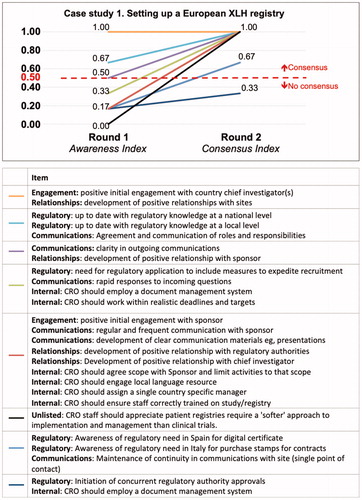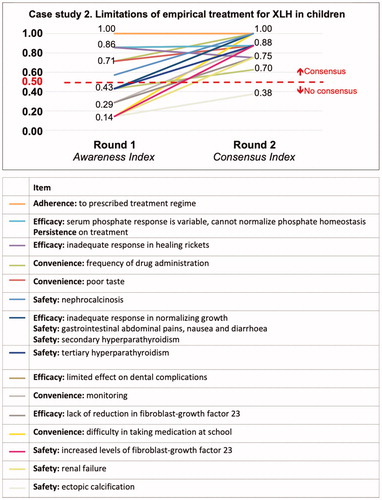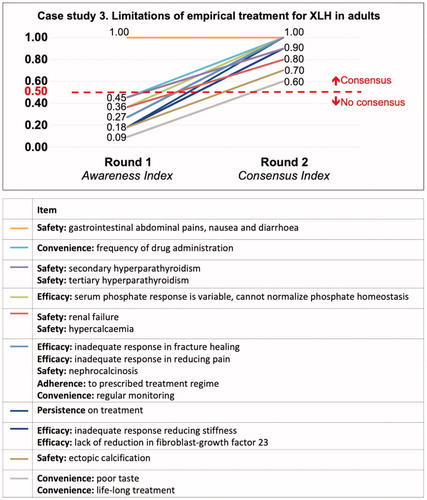Figures & data
Table 1. Summary of case studies.
Figure 1. Overview of awareness and agreement consensus. The awareness and agreement consensus overview is categorized according to the Awareness Index (frequency of each coded item in relation to the overall most frequently occurring coded item in Round 1) and the Consensus Index (calculated using the percentage of participant agreement with each statement during the structured questionnaire in Round 2). Complete awareness of an item has an Awareness Index of 100% and complete agreement consensus has a Consensus Index of 100%. Partial awareness and consensus have indices >50–100%. Low awareness and no agreement consensus have indices 0–≤50%. XLH, X-linked hypophosphatemia.

Table 2. Case study participants.
Figure 6. Insights into stratifying knowledge awareness and prompted agreement. Interpreting differences between group awareness and consensus of items. Round 1 – Item Generation: Green circles represent group awareness of items identified during a list-generating question; orange circle represents items are possibly require more education about or represent a time-lag between expert awareness and the knowledge spreading to the wider academic community; red represents items that are possibly not as relevant to the study question; blue represents external source of item, for example, an item from a systematic literature review. Round 2 – Consensus: Green circles represent agreement or prompted agreement; orange circle represent prompted agreement but in the minority of participants, possibly because more research is required to provide more evidence; red circle represents agreement that item should be excluded. Arrows between Round 1 and Round 2 represent the level of prompted agreement with the steeper the slope the greater the level of prompted change of opinion. The Index Score represents the amount of prompted agreement between awareness (item-generating) and observed consensus.
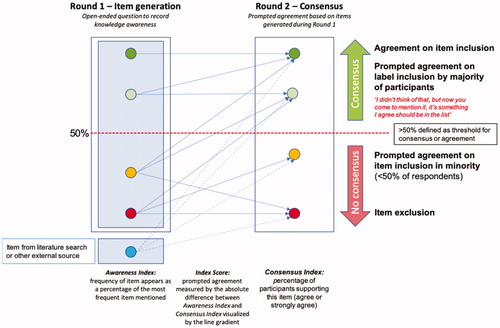
Figure 7. Planning future actions based on awareness and consensus categories. Group awareness of items and prompted agreement consensus can be used to plan future actions according to pre-defined categories. Abbreviations. AI, Awareness Index; f, frequency of item reported by participants in their responses to Round 1 question; fmax, the number of times the most frequently mentioned item was mentioned in the responses to the Round 1 question; fmin, the number of times the least frequently mention item was mentioned in the response to the Round 1 question; CI, Consensus Index.
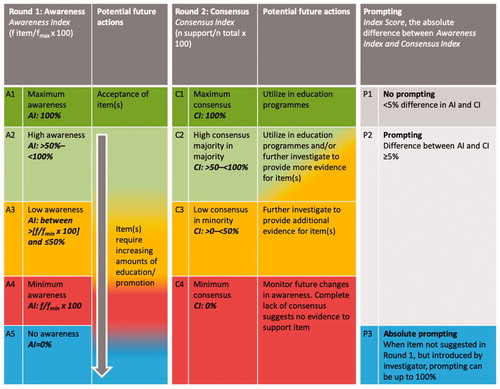
MED_11_Casestudy_4.pdf
Download PDF (551.7 KB)MED_11_Casestudy_3.pdf
Download PDF (429.2 KB)MED_11_Casestudy_2.pdf
Download PDF (226.6 KB)MED_11_Casestudy_1.pdf
Download PDF (146.1 KB)Data availability statement
The datasets used and/or analysed during the current study are available from the corresponding author on reasonable request.

